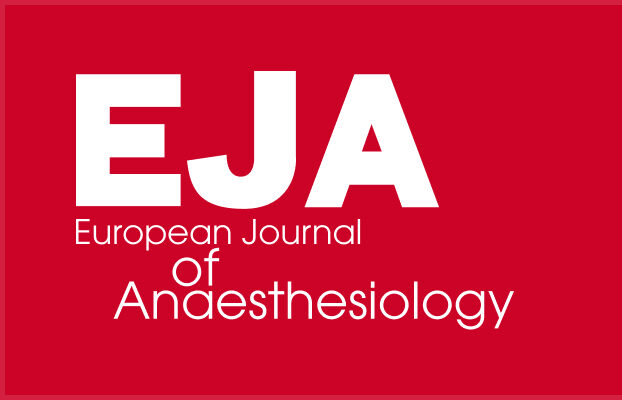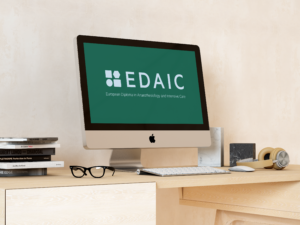Newsletter 2022
We always meet the patient. The question is, when and where?
Gabriel M. Gurman, MD – Chief editor
Ioana Grigoras, MD
 The last century witnessed a dramatic change in the anaesthesia field: from an activity covered by nonmedical personnel, anaesthesiology became a medical speciality, practised by physicians worldwide.
The last century witnessed a dramatic change in the anaesthesia field: from an activity covered by nonmedical personnel, anaesthesiology became a medical speciality, practised by physicians worldwide.
The anaesthesiologist became a clinician, and his/her expertise included – among others – vast knowledge regarding those diseases which can influence the anaesthetic procedures and patient postoperative outcomes.
Knowing his or her surgical patient became part of the speciality. The anaesthesiologist was obliged to get all the necessary information about the patient’s medical situation, including anamnesis, lab and imaging results and, if needed, the opinion of other specialists, such as cardiologists, nephrologists, etc.
Traditionally, the anaesthesiologist in charge of the pre-anaesthetic visit was the one to perform anaesthesia.
The pre-anaesthetic visit became routine. It was – and, of course, still is – the best solution for diagnosing and solving preoperative medical problems and optimising preoperative patient conditions, impacting the anaesthesia care and perioperative course. But also it represents a splendid occasion to start a communication with the patient, a human relationship which was supposed to continue in the operating room and the immediate postoperative period.
According to the American Society of Anesthesiologists Task Force (1) pre-anaesthesia evaluation is defined as “the process of clinical assessment that precedes the delivery of anaesthesia care for surgery and for nonsurgical procedures”.
The three options for the timing of an initial pre-anaesthesia evaluation are days or weeks before the planned surgery, the afternoon before the day of surgery, and on the day of surgery.
The experience accumulated over many years taught us that the best time for meeting a surgical patient is several days before the operating time, especially when the patient is a candidate for major surgery or when he/she presents a co-morbidity with an impact on the anaesthesia/surgical outcome.
The patient was supposed to be admitted to the hospital days before surgery. Thus the anaesthesiologist had enough time to visit him/her, get all the necessary information about specific factors with a possible impact on the decision to operate and on the type of most suitable anaesthesia.
Two simple facts belonging to the daily reality changed this routine.
The first one was the conclusion of the surgical-anaesthesia team that too often, more time was needed to prepare the patient for surgery, and as a result the surgical intervention may have to be postponed and the operation room schedule affected. By that time, the hospital administration realised the fact that the operating theatre had become a “factory of money”, and every single cancellation financially affected the budget.
But more than this, what necessitated a change of system was the continuously increasing number of patients who had been admitted to the hospital in the morning of elective surgery, the so-called”same-day surgery”.
The new situation imposed a change in the way we, anaesthesiologists, used to prepare the elective surgical patient for anaesthesia care.
This is the explanation for the appearance, in the last decades, of pre-anaesthesia evaluation clinics (PEC) all over the world and in almost every single hospital.
Lee et al. (2) mentioned the fact that the potential benefits of a PEC were mentioned as early as 1949, and Howland and Wang presented the idea in their paper of 1956 (3).
But only in the ninth decade of the last century PEC become part of the routine regarding pre-operative screening, mainly as an answer to the need to financially optimise the preparations for surgery and reduce the percentage of cancelling surgical interventions.
It was just a question of time until everybody in the system acknowledged the advantages of PEC:
- diagnosing and solving medical problems which could influence the perioperative course and outcome;
- reducing the number of unnecessary preoperative tests;
- reducing the percentage of cancelled/delayed surgical interventions;
- shorter length of stay in the hospital;
- a better communication between the anaesthesiologist and his/her patient;
- reduction of health care cost.
The idea of a PEC was not too easily accepted by the medical system.
The first step was to convince the surgeons to send their patients far in advance to a pre-anaesthesia outpatient consultation. Then there was a need to convince the hospital administration about the advantage of such a clinic, which needed space, facilities and nonmedical manpower. Finally, there was the responsibility of the anaesthesia departments to allocate physicians for this task.
Eventually, the PEC showed up all over the world, in the same rhythm as that of the increase in the percentage of patients operated on hours after their admittance to the hospital.
As of today, almost every single hospital on our continent has a well-established PEC. Patients are sent to it days, even weeks before their planned date of surgery, enough for solving medical or logistical problems, for optimising patient status, and for patient information and education about the perioperative course. As a result, the percentage of cancelled cases decreased dramatically, and patient satisfaction increased.
But the implementation of this idea is accompanied by some drawbacks.
First, in most cases, the anaesthesiologist who would perform anaesthesia is not the same one who examined the patient in the PEC. True, all the patient data can be found in the anaesthesia chart, but much too often, the patient meets his/her anaesthesiologist in the waiting room near the operating theatre when, in many cases, the patient is already under the premedication effect.
Secondly, PEC functions like all the other outpatient clinics, the physician in charge are obliged to allocate only a definite time (minutes) to very different patients. Recently, Compere et al. (4) found out that the mean (standard deviation) overall duration of the PEC consultation was 11.2 (5.8) minutes split into 6.8 (4.1) minutes of information and 4.4 (2.7) minutes of clinical evaluation. One cannot deny the fact that in such a hurry, every physician can skip important data regarding the patient’s medical status. And how can an effective communication relationship with the patient can be started in such a short time?!
We know that good communication skills, talking to the patient in the proper environment, with a well-chosen wording and pace, giving the patient time and opportunity to ask questions or to raise concerns, and giving realistic and understandable answers or information are the basis of building up a strong reliable patient-physician (anaesthesiologist) relationship. Soltner et al. (8) showed in 2011 that continuous care (one anaesthesiologist per patient) and anaesthesiologist empathy for each surgical candidate during the preoperative visit could alleviate anxiety and increase patient satisfaction.
But nowadays, one anaesthesiologist- one patient concept may be considered a luxury. In the era of “industrialisation” of medicine, can we or should we afford this luxury?
Finally, the current trend in medicine, reinforced by the COVID-19 pandemic, is to replace, as often as possible, direct patient-physician contact with telemedicine consultation using technological aids (phones, tablets, computers). Filling up web-based questionnaires, phone interviews, video-conferencing or computer-based patient information dramatically changed how we anaesthesiologists perform pre-anaesthesia consultation, leaving the live unmediated contact with the physician in the operating room.
Benhebesse et al. (5) wrote in 2020: “the pre-anaesthesia telephone conversation is suitable as an alternative to the pre-anaesthesia conversation in the outpatient department. High patient satisfaction results from the patient-oriented process, avoidance of transportation routes and participative communication”.
So, one is entitled to ask how this recommendation goes together with the idea that: “the quality of care a patient receives depends in part on the physician’s communication skills. Physicians, who are informative, show support and respect for the patient, and facilitate patient participation in care generally have patients who are more satisfied, more committed to treatment regimens, and who experience better health following the consultation(6)?”
Plautus said: “in everything, the middle road is the best. All things in excess bring trouble to man”. Telemedicine can become a very important tool by gathering data about the patient and his/her medical condition. It saves time and confusion. But it would never replace direct contact with the patient. And the current SARS-CoV-2 pandemic demonstrates more strongly and dramatically than ever the importance of direct, unmediated human contact.
Because “medicine is the most humanistic of the sciences and the most scientific of the humanities” (7).
This paper aims to bring to our readers, in a very compact form, the main aspects of the pre-anaesthetic evaluation clinic, and to encourage the creation of such clinics in those places it does not exist, yet.
We hope it will help in the process of making such a decision.
References
- Practice advisory for preanesthetic evaluation. ASA Task Anesthesiology 2002;96:485
- Lee E, Pavlin DJ, Amundsen L. Singapore Med J. 2004;45:509
- Howland WC, Wang KC. NY State J Med 1956;56:2497
- Compere V et al. Anesth Analg 2022;134:496
- Benhebesse S, Gibas G , Kietaibl S. Wien Med Wochenschr 2020;170:359
- Street RL, Gordon H, Hidet P. Soc Sci Med 2007
- Jackson SH. Seminars in anesthesia 1993;12:287
8.Soltner C, Giquello JA, Monrigal-Martin C, et al.. Brit J Anaesth 2011; 106: 680
[maxbutton id=”1″ url=”https://www.esaic.org/newsletter/” text=”Read the Newsletter” ]










